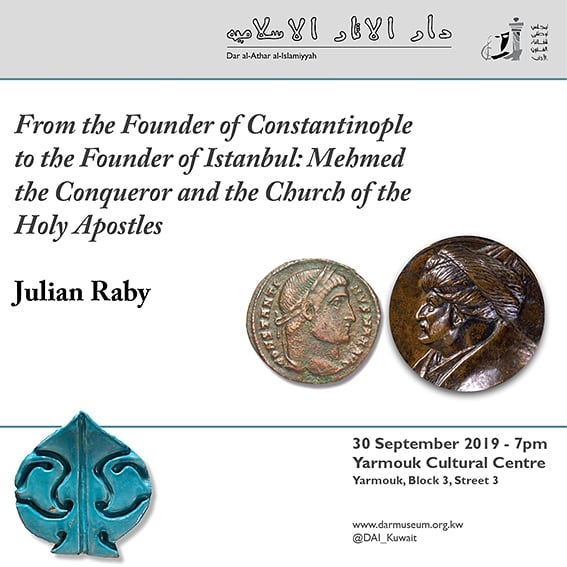Bio.
Dr Julian Raby is the director emeritus of the Freer Gallery of Art and the Arthur M. Sackler Gallery, the Smithsonian Institution’s national museums of Asian art in Washington DC. Before joining the Smithsonian in 2002, he was a lecturer in Islamic Art & Architecture at the University of Oxford for 22 years. He has written widely on topics as diverse as Iznik pottery, Ilkhanid paintings, Mosul metalwork, Chinese porcelain at the Ottoman court, and the “classical revival” in twelfth century Syria.
From the Founder of Constantinople to the Founder of Istanbul: Mehmed the Conqueror and the Church of the Holy Apostles.
In 1453 the Ottoman Sultan Mehmed the Conqueror captured the Byzantine capital, Constantinople. He extinguished an empire that had lasted more than 1,100 years and fulfilled a dream of conquest that stretched back 800 years. He succeeded where Mu`awiya, the first Umayyad caliph, had failed. Mehmed appropriated the great church Hagia Sophia for Islam. A second great church, the Holy Apostles, he demolished to build his own mosque. The Holy Apostles, which was founded by the first Christian emperor, Constantine the Great, was the site of Constantine’s tomb and the tombs of the next ten emperors, the dynastic pantheon of Byzantium. This lecture shows how Mehmed the Conqueror’s Kostantinyya/Istanbul was – quite literally – built over the heritage of Constantinople/Byzantium.
[presto_player id=8924]




